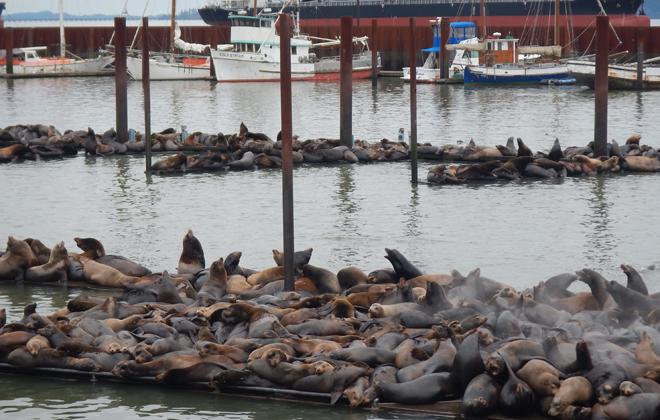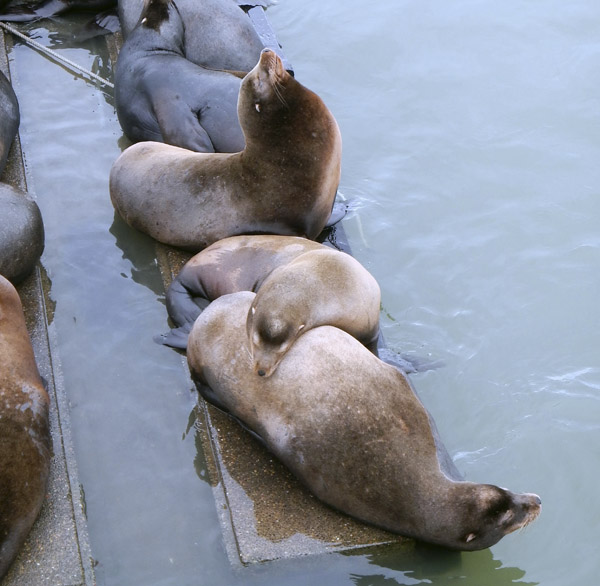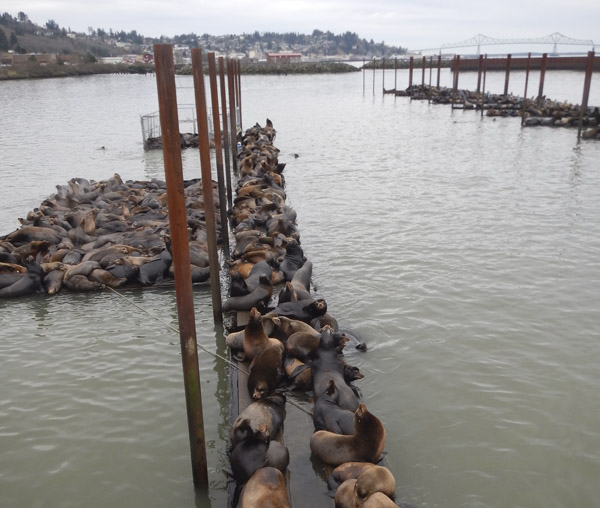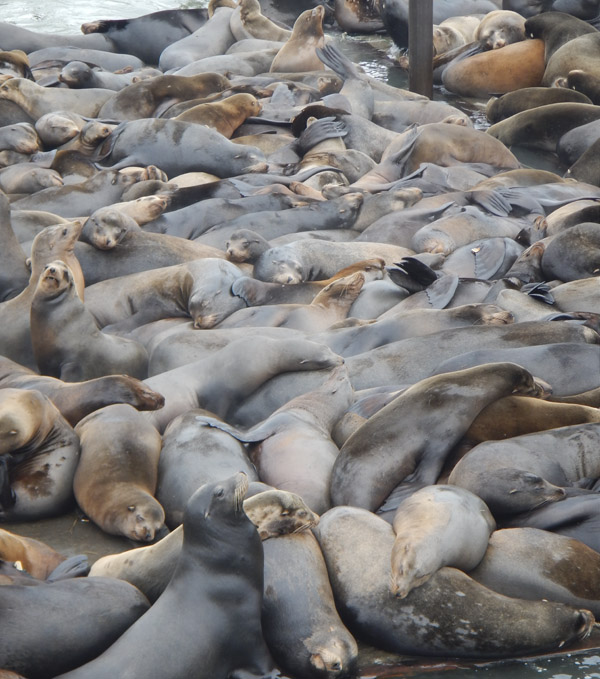Published in the Ocean Watch column, Honolulu Star-Advertiser © Susan Scott
February 23, 2015
Astoria, Ore. » During my current road trip from Seattle to San Francisco, I stopped in this picturesque town at the mouth of the Columbia River to watch the cargo ships, trawlers and recreational boats I had glimpsed while crossing the river’s 4-mile bridge.
At the waterfront, furry brown heads dipped, bobbed, glided and called. This surprise encounter with marine mammals thrilled me — but not everyone is so enamored.

To many Astoria residents, the California sea lions that have moved into their harbor are a curse.
I knew the animals were sea lions because of the visible ear flaps on their heads. I also identified the species from their racket.

California sea lions are a noisy bunch that bellow and bark as they jockey for space among themselves.
The dull roar I heard at the waterfront, though, came from far more than the sea lions in sight. I set out to find the source of the commotion.
California sea lions are native to the Pacific Coast from Vancouver Island to the southern tip of Mexico’s Baja Peninsula. These marine mammals with doglike faces are playful and intelligent.
Most of the trained “seals” in marine parks, including Hawaii’s Sea Life Park, are California sea lions.

In the early 1970s the species numbered about 10,000. Since the Marine Mammal Protection Act in 1972, the sea lion population has steadily increased. Approximately 300,000 individuals live along the coast today.
About a mile up the river, I saw, heard and smelled the cause of the commotion. It seemed as if half of Astoria’s 2,000 or so molting sea lions lay draped over one another on most of a marina’s floating docks, while the other half tried jumping onto the jam-packed platforms.
Those already on the pier roared their outrage.
Most of this marine mammal mass arrived to feast on an influx of smelt. The animals will stick around, biologists believe, for the spring salmon run.
Talk about an uproar. Fishers, marina owners, slip holders and nearby residents are on one side of this stinky situation, while conservationists, animal rights activists and some in the tourism industry are on the other.

There are no easy fixes. Wildlife managers are considering options ranging from killing some of the creatures to building resting platforms strictly for the sea lions. Studies are ongoing.
Astoria is a fine place to visit for lots of reasons, one being its sea lions. The easy viewing of these animals is a time to think about ways humans can live in harmony with the wildlife we have chosen to protect.